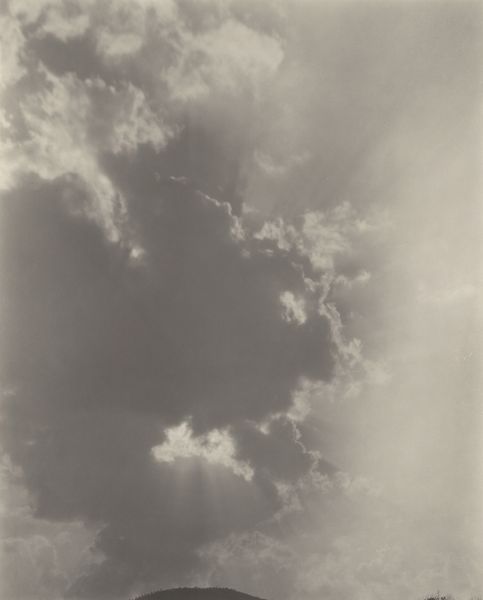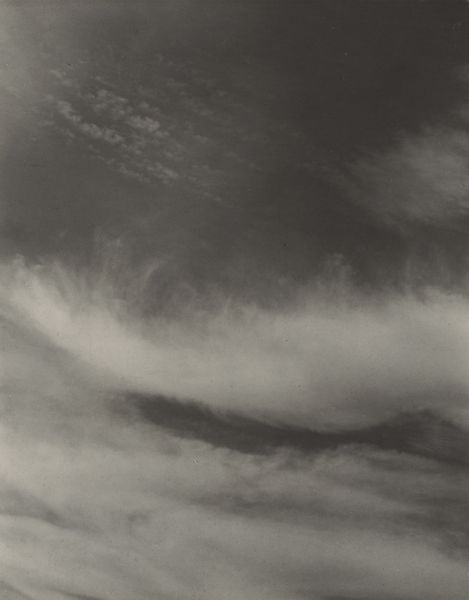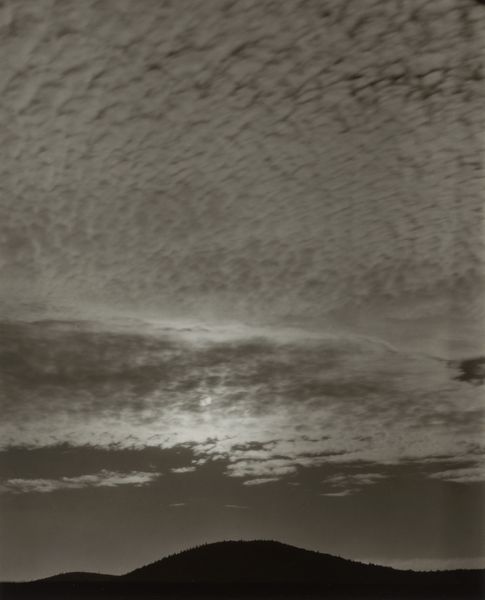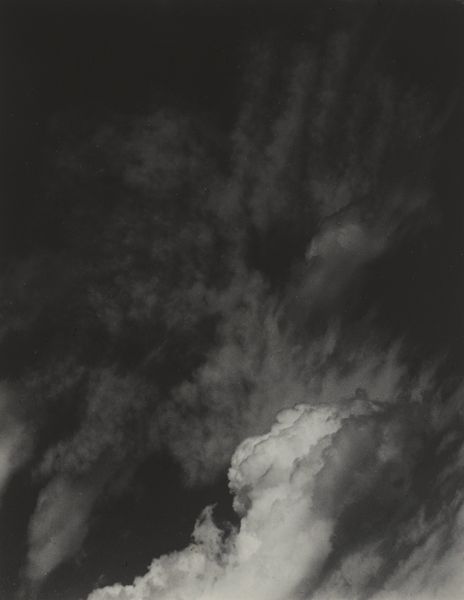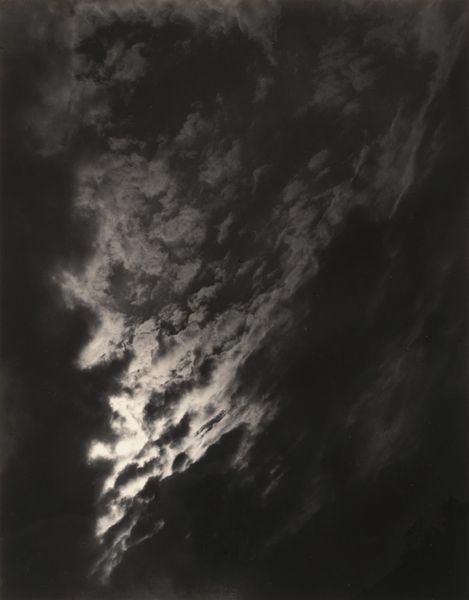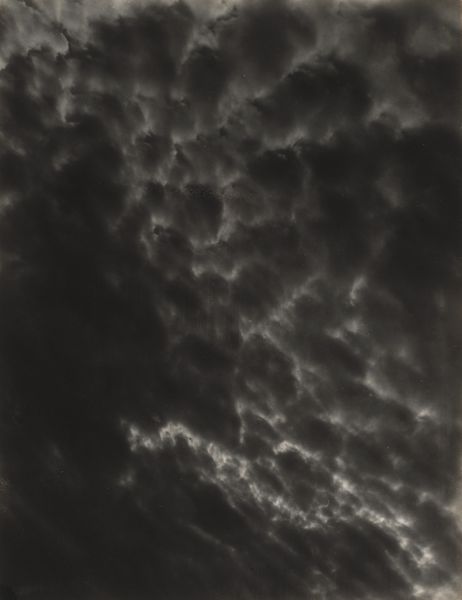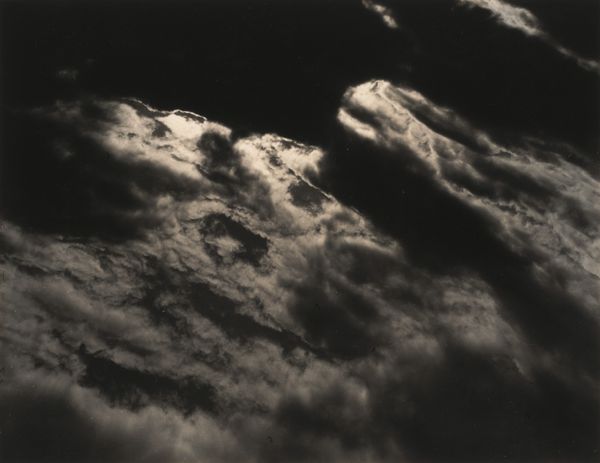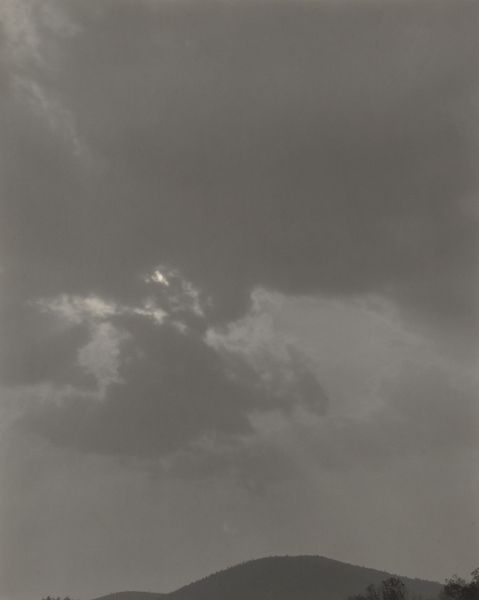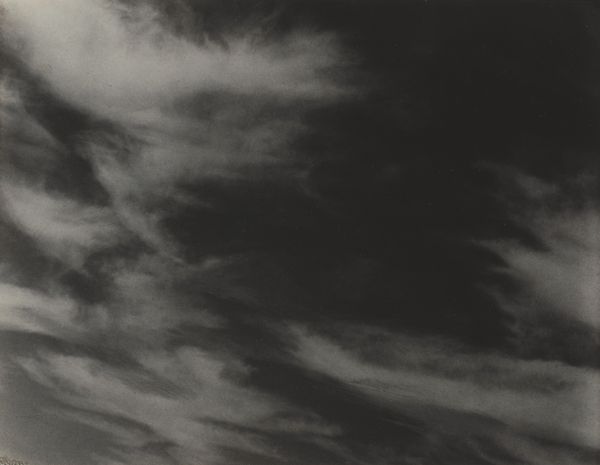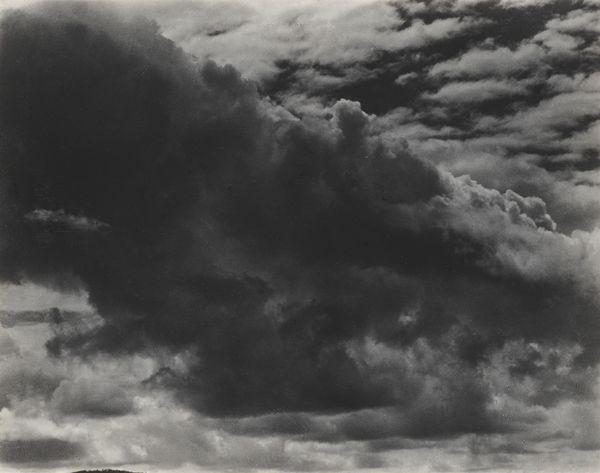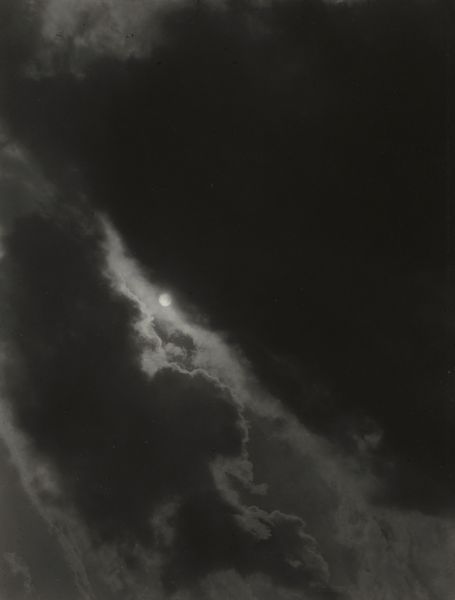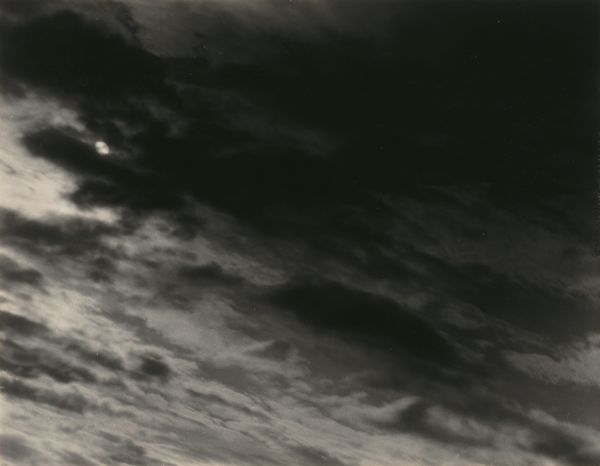
silver, paper, photography, gelatin-silver-print
#
silver
#
pictorialism
#
landscape
#
paper
#
nature
#
outdoor photography
#
photography
#
cloud
#
gelatin-silver-print
#
abstraction
#
modernism
Dimensions: 12.2 × 9.2 cm (image); 12.6 × 10.1 cm (paper/first mount); 34.3 × 27.6 cm (second mount)
Copyright: Public Domain
Editor: We're looking at Alfred Stieglitz's "Equivalent," a gelatin silver print from 1923. The monochrome palette creates such drama in the skyscape. It feels both vast and incredibly intimate. What's your take? Curator: It's easy to see this as purely aesthetic, a study in light and form, and on one level, it certainly is that. But Stieglitz, especially at this point in his career, was deeply invested in the idea that these cloud formations represented something far beyond their literal appearance. Editor: So, something symbolic? Curator: Exactly. He believed these cloud photographs could be "equivalents" for inner emotional states, for the psychological landscape of modern life. Think about the social and political climate of the 1920s: the aftermath of World War I, the rise of industrialization, seismic shifts in social structures, anxieties of modernism. What if we view these clouds through that lens? What feelings might these skies evoke in that context? Editor: Anxiety, definitely. A sense of looming…something. But also a kind of turbulent beauty? Curator: Precisely! And Stieglitz was a master at using photography to grapple with those complexities. His "Equivalents" challenge us to consider the intersection of inner experience and the external world, how we project our anxieties and hopes onto the landscape around us, blurring the line between objectivity and subjective emotional experience. The "Equivalents" series reframes what photography could be, a powerful force for expressing internal landscapes during times of tremendous social and technological upheaval. Editor: It’s almost like he’s saying that the sky *is* a reflection of us, of society itself. I never considered photography could be such an immediate form of social commentary! Curator: It's a conversation, always, between the artist, the artwork, and the viewer in their own unique time and place. I think these photos invite everyone to consider those intersections. Editor: Thanks. That's really changed how I see this work.
Comments
No comments
Be the first to comment and join the conversation on the ultimate creative platform.

